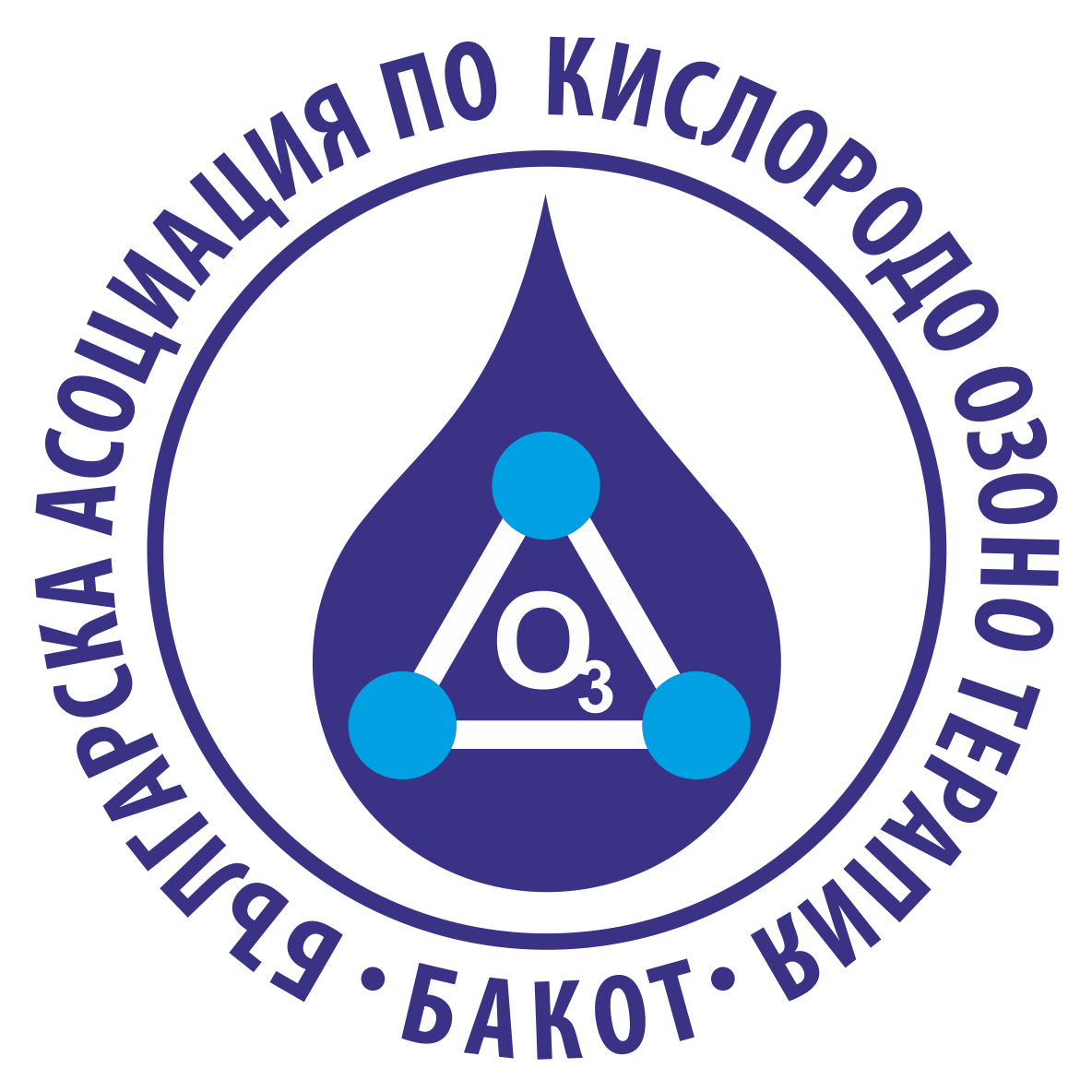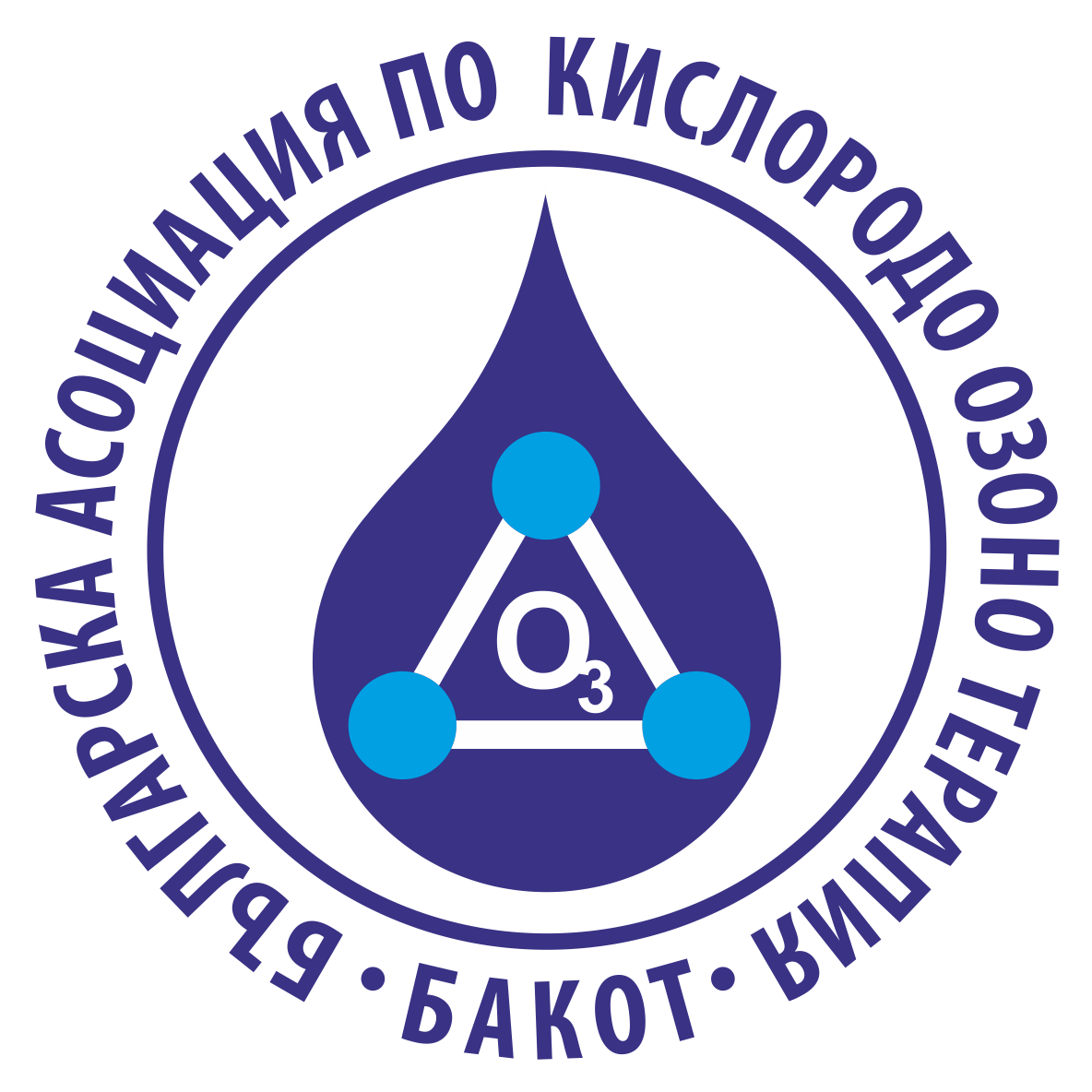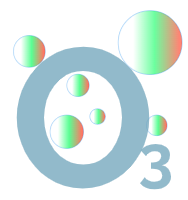
Readings:
VIDEO COLLECTION:
Useful videos:
Brief educational video in Bulgarian language explaining the innovative method for treatment of Disc Hernias with Ozone therapy.
Brief educational video in Bulgarian language explaining what is OZONE and how it could be used for treatment of various health conditions.
EXTERNAL LINKS:

Table of Contents
WHAT IS OZONE THERAPY?
What is ozone?
Ozone (/ˈoʊzoʊn/) (or trioxygen) is an inorganic molecule with the chemical formula O3. It is a pale blue gas with a distinctively pungent smell. Ozone is a powerful oxidant and has many industrial and consumer applications related to oxidation (including in Medicine).

What is ozone therapy?
Ozone therapy is a complementary treatment in medicine for various pathological processes through the use of established systemic, oral and local methods of applying ozone according to the appropriate treatment regimens, doses and concentrations, produced by a specially designed medical ozone generator in the form of an oxygen-ozone mixture with varying ratios of 99.95-95% oxygen to 0.05-5% ozone and based on the powerful oxidizing properties of ozone and its ability to cause controlled oxidative stress in living organism.
History
In 1785, Dutch chemist Martinus van Marum was conducting experiments involving electrical sparking above water when he noticed an unusual smell, which he attributed to the electrical reactions, failing to realize that he had in fact created ozone.
A half century later, Christian Friedrich Schönbein noticed the same pungent odour and recognized it as the smell often following a bolt of lightning. In 1840, he succeeded in isolating the gaseous chemical and named it “ozone”, from the Greek word ozein (ὄζειν) meaning “smelly”.

For this reason, Schönbein is generally credited with the discovery of ozone. He also noted the similarity of ozone smell to the smell of phosphorus, and in 1844 proved that the product of reaction of white phosphorus with air is identical.
After 1840, many studies on the mechanism of disinfection of ozone were elaborated. But it was not until almost twenty years later that the new substance was revealed to be a triatom allotropic form of oxygen: in 1856 Thomas Andrews showed that ozone was formed only by oxygen, and in 1863 Soret established the relationship between oxygen and ozone by finding that three volumes of oxygen produce two volumes of ozone.
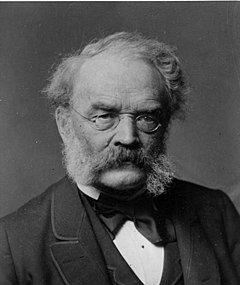
The first ozone generator was manufactured in Berlin, by the German inventor Ernst Werner von Siemens, who also wrote a book on the application of ozone in water, which gave rise to a series of pilot projects, during which the ozone disinfection mechanism was researched. In 1857 Werner von Siemens built the first superior induction tube with which Kleinmann made the first attempt to destroy microorganisms and also performed the first gas insufflations in animals and humans.
The formula for ozone, O3, was not determined until 1865 by Jacques-Louis Soret and confirmed by Schönbein in 1867.
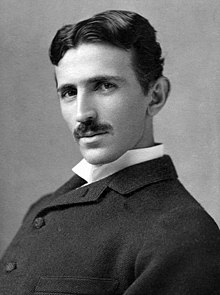
In 1896 Nikola Tesla patented the first ozone generator – a corona discharge ozone generator using charged metal plates to act on ambient air, and in 1900 founded Nikola Tesla “Tesla Ozone Co.”, manufacturer of generators for medical use.
The entry of ozone more widely into clinical practice is considered to have come from Germany. During the First World War 1914-1918 , German doctors noticed that the wounds of soldiers in a field hospital that was located near a power plant healed faster. It turned out that the effect was due to the large amount of ozone in the air. Dr. Anton Wolff already in 1915 began mass application of ozone as an antiseptic. German doctors used ozone to treat hard-to-heal and decubitus wounds, gangrene, severe burns and to stop bleeding in wounds. During this time, the Australian surgeon Erwin Payr (1871-1946) and the Swiss dental surgeon E.A. Fisch (1899-1966) actively created, worked and published valuable manuals on ozone therapy, the latter of whom wrote a dissertation in 1950 on ozone in medicine and created the CYTOZON generator, which is still present in the equipment for ozone therapy in dentistry. Scientific studies in dentistry after E.A. Fisch appeared only in the 80s thanks to the developments of H. Kirschner and A. Filippi.
1936 the French doctor P. Aubourg introduced the method of rectal ozone insufflation in the treatment of fistulas and chronic colitis with good success and later for systemic application and thus opened the way for the use of ozone therapy in pediatrics as well. Later, after the second half of the twentieth century, the handbooks of the surgeon Hans-Georg Knoch on proctology and rectal insufflation were published, which elaborated this method in detail.
During the Second World War 1939-1945, the study of the healing effect of ozone was actively continued in Germany, where it was successfully used for local treatment of wounds, burns, after surgical interventions and amputations, other severe traumas received at the front.
After the war, however, practically for twenty-thirty years, the research was stopped, due to the appearance of antibiotics, the absence of reliable compact ozone generators and ozone-resistant materials. It was only in the 1970s that specialists again remembered the healing properties of ozone and included it in international scientific research programs.
Hans Wolff (1927-1980), Joachim Hänsler (1908-1981) and Siegfried Rilling founded in 1972 German Medical Society of Ozone Therapists. All of Hans Wolff’s medical and research work has been devoted to ozone, and through his numerous publications and practice he has had an enormous share in the spread of ozone therapy throughout the world. In November 1973, the International Institute for the Study of Ozone was founded as a public-scientific and educational organization.
Hans Wolff 1968 is also credited with putting the major autochemotherapy (MAH) method into practice in collaboration with Joachim Hänsler and his company then for the production of medical ozone generators with accurate dosing in the 60-70s of the XX century.
The development and dissemination of the bag gasification method is due to H. Werkmeister and O. Rokitansky in the second half of the past century.
In Italy, the orthopedic doctor Cesare Verga developed in the 1980s the discolysis method for the intradiscal treatment of hernias with ozone and the local paravertebral application of ozone using the discosan method for spinal degenerative and inflammatory diseases. His student – Italian physiologist from Siena Prof. Velio Bocci (1928 – 2019) later took over the development of ozone therapy in Italy under the auspices of the national association of Italian ozone therapists, developing key manuals and textbooks on the practice and theory of ozone therapy, rooted in modern understandings of the application and mechanisms of action of ozone.
A serious impetus for the development of ozone therapy, as we know it today, was given by the ozone therapy school of Russia. It is also due to the accumulated large database of scientific studies in the field, incl. and the introduction and demonstration of the benefits of the use of ozonated saline intravenously in practice. The State Medical Institute of Nizhny Novgorod in 1977 developed under the leadership of an academician cardiac surgeon from the Russian Academy of Medical Sciences ( RAMN ) – Boris Al. Korolev (1909-2010): ozonated saline as a systemic method of administration. The subsequent extensive studies and the specially published works of Prof. Stanislav Dm. Razumovsky (1974 – “Ozone and its reactions with organic compounds”) are the impetus for the accumulation of modern scientific data on all known mechanisms of ozone therapy. In April 1979, for the first time in the world, an ozonated cardioplegic solution was administered in the coronary bloodstream of a patient during surgery for a congenital heart defect in Russia. In 1986, the same institute conducted the first extracorporeal ozonation of blood during cardiac surgery for prosthetic mitral valve. Many more avant-garde methods of ozone therapy have been developed and applied in practice by the Russian school, which are studied and used all over the world, for which Russian researchers such as Klavdia N. Kontorshchikova, Gennady A. Boyarinov and Sergey P. Peretyagin played a significant role. The latter is also the current chairman of the Russian Ozone Association and a member of the International Scientific Division ISCO3 of IMEOF.
The credit for the accumulation of a scientific database and practical manuals of the Cuban medical school is not small, especially after the establishment in Cuba in 1994 of the National Center for Scientific Research in the Field of Ozone Therapy. Biochemical studies of the mechanisms of ozone therapy are partly the merit of the long-term work of the Cuban institute in question, and its scientists such as Silvia Menendez Cepero and Olga Sonia Leon Fernandez stand out among them.
In 1979, the International Medical Association of Ozone Therapists was founded.
Formed in April 2005 in New Delhi, India and actively operating on the initiative of the Italian ozone therapy school with headquarters in Brescia, Italy is also the World Federation of Oxygen-Ozone Therapy (WFOOT). The chairmanship in WFOOT was handed over by the Romanian orthopedist Stefan Tiron, who has been holding it until recently, to Brazil in the person of Prof. Antonio Teixeira (president of ABOZ – the Brazilian Association of Ozone Therapy) at the organization’s 7th World Congress held in Bucharest, Romania, May 5-7. 2022.
2009, the International Medical Ozone Federation (IMEOF) was founded in Pontevedra, Spain, with headquarters in Madrid, on the initiative and under the auspices of the Spanish Ozone Medical School (AEPROMO). Today, IMEOF works actively under the guidance of Adriana Schwartz and Frank Shallenberger and collects all scientific articles and research results in the field of ozone therapy. Doctors from various specialties from the countries of the European Union, USA, Canada, Russia, Brazil, Cuba, Japan, China, Israel, South Africa and others participate in its international congresses.
The main international medical document and the first international consensus in working with ozone as methods and ways of application, indications, treatment schemes, doses and concentrations is the Madrid Declaration on Ozone Therapy. It was issued June 2010 by the IMEOF Scientific Council, known as ISCO 3 – International Scientific Committee of Ozonetherapy and with the assistance of the Royal Spanish Academy of Medicine. Currently, the Madrid Declaration on Ozone Therapy has two revised and supplemented editions (2nd edition June 2015 and 3rd edition May 2020) and is the main recommended and consensus document at a globally recognized level. Behind this successful project are the efforts of the Spanish association of ozone therapists (AEPROMO) under the leadership and with the special assistance of Spanish obstetrician-gynecologist Adriana Schwartz and a large international team, among which the merit of names such as Velio Bocci, the current president of ISCO 3 – Gregorio Martinez Sanchez, Nabil Mawsouf and many others.
To date, in over 50 countries around the world there are active ozone practices in the fields of medicine, cosmetics, dentistry and veterinary medicine. An international ozone therapy library with a vast number of published scientific materials, manuals, research results and articles already in excess of 3300 documents as of May 2020 is now available to ozone therapists.
How do we produce ozone?
Ozone is produced from medical /pure/ oxygen in a special apparatus under the influence of an extremely high charge of electrical energy.
A medical ozone generator is a special apparatus with the technical ability to produce an oxygen-ozone mixture in appropriate ratios, concentrations, flow rate and volume, based on the passage of pressurized oxygen from a container through an electric high-voltage arc in an insulated tube.
Ozone therapists are certified doctors, additionally qualified and certified to work with ozone in medicine, who, with the help of the relevant equipment and trained medical specialists, perform ozone therapy in the fields and specialties in which they are the only ones competent.
Effects of ozone on the human body:
- Antiviral, antibacterial and fungicidal action /kills various types of viruses, bacteria and fungi and prevents their reappearance/
- Activates the body’s antioxidant systems, helps break down free radicals.
- Immunomodulatory effect – depending on the dose, it can have a stimulating or suppressing effect on immunity, therefore it can be used both in secondary immunodeficiency conditions /after prolonged illness/ and in autoimmune diseases.
- Direct effect on the respiratory and cardiovascular system: it improves microcirculation, reduces peripheral vascular resistance, increases the elasticity of erythrocyte membranes and, as a final result, reduces oxygen hunger in the cells – therefore, hypertensive disease and ischemic heart disease are affected with ozone therapy.
- It increases the amount of oxygen delivered to the tissues and thus leads to its better absorption.
- Ozone therapy affects lipid metabolism. Ozone oxidizes fatty acids, which leads to a decrease in cholesterol, total lipids and triglycerides in the blood – favorable conditions are formed to protect vessels from sclerosis.
- Ozone has a powerful analgesic and anti- inflammatory effect, potentiated mutually each other.
- Detoxifying effect: for the prevention and treatment of diseases caused by metabolic disorders – obesity, diabetes /proven to lower blood sugar/, improves liver function.
- Reduces the level of uric acid /which is the cause of gout/
Methods of ozone therapy:
- Intravenous, intramuscular, subcutaneous, intra-articular, injections in painful areas, injections in biologically active points
- In special sacks for effects on the skin (for diabetic foot, hard-to-heal wounds, skin diseases); rinsing or drainage with ozonated solutions of skin and mucosa
- Massage with ozonated oil, rectal and vaginal insufflations
Indications of ozone therapy
- Different types of arthrosis (gonarthrosis, coxarthrosis, spondylarthrosis)
- Diseases of the peripheral nervous system (disc herniation, discogenic radiculitis, plexitis, neuritis, polyneuritis, diabetic, toxic, alcoholic polyneuropathy)
- Diseases caused by acute or chronic disorders of cerebral circulation (ischemic stroke, chronic vertebrobasilar insufficiency, neurovegetative dystonia)
- Migraine, neurosis, neurasthenic complaints caused by computer work and screen radiation
- Any liver damage caused by alcohol or viruses
- Delayed physical recovery after severe illnesses
- General fatigue and exhaustion
- Gout, diabetes mellitus, hypertensive disease, ischemic heart disease
- Skin diseases /acne, rosacea, eczema, epidermophytia/
- Hard-to-heal wounds
- Excess weight, cellulite
Contraindications:
- Hyperthyroidism
- Pancreatitis
- State after myocardial infarction
- Condition after hemorrhagic stroke
- Acute alcoholic intoxication
- Blood coagulation disorders
- Epilepsy
“Primum non nocere!”
It should be noted that the preclinical, genotoxic, toxicological and clinical studies carried out so far in different parts of the world confirm the safe and effective application of ozone treatment methods and confirm an appropriate therapeutic range of doses and concentrations for its use in clinical practice.
“Start low, go slow!”
” Start low doses, increase them slowly!”
Ozone treatment is based on the principle of inducing a controlled and transient minimal oxidative stress, which will unleash powerful antioxidant and redox-protective mechanisms plus all other effects of action without damaging the tissues.
EFFECTS OF THE OZONE THERAPY
Analgesic effect of OZONE:
Ozone has proven its powerful analgesic effect, especially in the presence of severe inflammatory processes. This effect is primarily due to the gradual oxidation of the mediators that are formed in the focus of inflammation or pain and transmit the information to the brain.
In chronic pain syndrome, a major role is played by the balance between oxidative stress and anti-oxidants production, and as we have already said, OZONE actively works to balance oxidative – reductase system. This is also the reason for the analgesic effect of its application.
Detoxification effect of OZONE:
1. Prevention and treatment of diseases caused by METABOLISM disorders.
The basis of the diseases caused by disturbance of the “Exchange” are:
- Obesity (increased excess weight)
- Reduced sensitivity of peripheral tissues to insulin and diabetes mellitus
Some authors even associate diseases such as arterial hypertension, type 2 diabetes and ischemic heart disease precisely with these metabolic disorders.
The preventive OZONOTHERAPY procedures carried out in sanatorium conditions (including: infusion of Ozonated Physiological Solution /SSO3/ 10-15 procedures; drinking ozonated water 100 ml – 21 days and rectal insufflation 3 to 5 procedures weekly within 21 days) show:
- Weight reduction of patients
- Improvement of lipid metabolism
- Reduction of upper and lower limits (S/D) of arterial blood pressure
- Substantial reduction in blood sugar
- Lowering the cholesterol level
- Lowering triglycerides
- Improving the kinetics of the myocardium
- Improving the pumping function of the heart
- Increasing the level of high-density lipoproteins
All this shows that OZONOTHERAPY has a definite positive effect on the mechanism of diseases such as arterial hypertension; diabetes ; ischemic heart disease, etc.
2. Post-infarction conditions
After the application of OZONE (treatment course 10/15 procedures Venous infusion of Ozonated Physiological Solution /SSO3/ – 200ml 2.0/2.4mg/l) the following results were recorded:
- Improvement of electrophysiological parameters of the heart
- Reduction in the frequency of ischemic attacks (as a result of the improved blood supply to the heart muscle)
- Improvement of coronary blood flow
- Improvement of microcirculation
- Improvement of metabolic processes at the cellular level
- Improvement of coagulation factors with tendency to hypocoagulability
- Improvement of lipid exchange processes
- Increasing the ANTIOXIDANT ACTIVITY OF THE BLOOD PLASMA
- Improving patient endurance
- Reduction in the degree of angina pectoris and heart failure
- Ozone therapy predisposes for reducing medication doses by up to 30%
3. Arterial hypertension
After applying the OZONE (course of treatment 10/15 procedures SSO3– 200ml 2.0/2.4mg/l) the following results were recorded:
- Reduction in AP (arterial blood pressure) to 4.4 mmHg after each infusion or for the course of treatment from 22 to 30 mmHg on SYS and 10/18 mmHg on DIA
- Increase SpO2 from 90 to 96%
- Lowering the heart rate to 8 to 10 beats per minute
4. Chronic cerebral/vascular insufficiency
After the application of OZONOE (course of treatment 10/15 procedures SSO3-200ml 2.0/3.0 mg/l and introduction of paravertebral in the cervical thoracic area of O2/O3 mixture with a concentration of 2-5mg/l per 2ml 10/15 procedures) are the following results were recorded:
- Improving vestibular resistance
- Dizziness reduction.
- Improving sleep
- Stabilizing statics and when walking
- Reducing the manifestations of depression. Improving self-esteem
- Increase in activity. Improving mood
- The registration of the results was done both subjectively by the patients and objectively by instrumental methods (Doppler; EEG; Electronystagmography, etc.)
5. Chronic obstructive lung disease
After applying OZONE (course of treatment 10/15 procedures SSO3-200ml 1.0/3.0mg/l) the following results were recorded:
- Cough reduction
- Improving breathing
- Reduction of sputum
- Suppression of inflammatory processes
- Reduction of C-reactive protein
- Decrease oxidative stress
- Activate anti-oxidant system
- Improving blood rheology
- Improving immunity
- Increase in FVC over 30%
- Reduction of supraventricular extrasystoles by 40%
- Reduction of HR at the same percentage
- Increase the walking distance covered for 6 minutes.
The registration of the results was done both subjectively by the patients and objectively by instrumental methods (Doppler; EEG; Holter ECG; Spirometry; Physical Stress tests; Immune status; Blood rheology; Complete blood count). As a result of the achieved results of the ozone therapy, it was necessary to adjust the medications supporting the therapy up to 72%. Better results were achieved in patients who underwent therapy in the acute phase of the disease. The period of remission lasts from 5 to 7 months, during which no relapses have been registered.
6. SCIATICA and OSTEOCHONDROSIS
Here Ozone therapy is successfully combined with acupuncture. The treatment is carried out by local introduction into the BAT (biologically active points), located paravertebrally in the cervical region (for cervical osteochondrosis) or in the region of the lumbar and sacral vertebrae (for the cauda equina syndrome) 3 cm from the spine, in 4 to 6 points with a volume of 1 to 3 ml. O2 /O3 mixture with a concentration of 5000mcg/l. 10 procedures are performed in a course. The combination between photo and quantum therapy, physio procedures, massage is successful. It is important to know that ozone therapy must precede all other therapies except spinal unblocking!!!!
The results of the therapy:
- In 21% of the cases there were no complaints after the therapy (0%)
- In 43% of cases patients feel very well (33%)
- In 30% of cases, patients feel well (38.3%)
- In 5% of cases, patients feel satisfactory (26.7%)
- In 0% of cases no improvement was registered (1.6%)
In brackets are the results of the control group, in which traditional drug therapy was carried out. If we sum up the first two results for the two groups, we will see that they are 64% against 33% or OZONOTHERAPY helps to increase the good results in the therapy!!!!
7. OZONOTHERAPY and correction of cosmetic problems.
The treatment of severe forms of acne and rosacea is a serious challenge. In this case, meso-ozone therapy was used, using an O2 /O3 mixture with a concentration of 4000 μg/l and an amount of up to 15 ml per procedure, a total of 10 procedures were performed every other day. The application is around the affected areas.
Results of procedures performed in 53 patients:
- In 60% of patients, a significant improvement was registered
- In 36% of patients satisfactory improvement
- In 4% no change was registered.
APPLICATIONS OF OZONE THERAPY
OZONE THERAPY was born in Germany, after years of using ozone for medical purposes, it was transferred to Italy, where it became widespread after confirming its high efficiency in the pathology of disc herniation (Cesare Verga).
We will not be wrong if we say that ozone therapy today is the lightest and at the same time the most effective therapy for disc herniations (dorsal, cervical or lumbar).
Specialized medical information channels do not give ozone therapy the importance it deserves. And yet the benefit of it is enormous. It is proved by the countless patients who pass the truth “from mouth to mouth” about its effectiveness in various diseases.
German doctors always privilege the disinfecting and rheological action of ozone on disturbances in the blood supply. The Italian school introduced its use in disc herniations.
Applications
Ozone therapy is distinguished by ease of application, good patient tolerance, complete absence of side effects and high medical-social and economic efficiency. It has a wide range of action: bactericidal, virucidal, fungicidal, immunomodulatory, antitoxic and detoxifying, and its use shortens the duration of treatment and the rate of mortality and disability.
- Different types of arthrosis (gonarthrosis, coxarthrosis, spondylarthrosis)
- Diseases of the peripheral nervous system (disc herniation, discogenic radiculitis, plexitis, neuritis, polyneuritis, diabetic, toxic, alcoholic polyneuropathy)
- Diseases caused by acute or chronic disorders of cerebral circulation (ischemic stroke, chronic vertebrobasilar insufficiency, neurovegetative dystonia)
- Migraine, neurosis, neurasthenic complaints caused by computer work and screen radiation
- Any liver damage caused by alcohol or viruses
- Delayed physical recovery after severe illnesses
- General fatigue and exhaustion
- Gout, diabetes mellitus, hypertensive disease, ischemic heart disease
- Skin diseases /acne, rosacea, eczema, epidermophytia/
- Hard-to-heal wounds
- Excess weight, cellulite
Pathologies in which it is indicated as a method of treatment:
- orthopedics, rheumatology and traumatology:
arthrosis and arthritis, including rheumatoid and psoriatic arthritis, tendinitis, carpal tunnel syndrome, cervical and lumbar discopathy (cervical brachialgia, etc.) - circulatory disorders:
arterial, venous and lymphatic: peripheral vasculopathies of a venous and arterial nature (phlebitis, peripheral venous insufficiency, diabetic microangiopathy, peripheral ulcers of a vascular and dysmetabolic nature, lymphedema) - neurological disorders:
from memory problems to cerebral ischemia, multiple sclerosis, encephalitis of different nature (tension and vascular) - diseases of the third age with a decline in physical and mental tone:
Alzheimer’s disease, Parkinson’s disease, otosclerosis, retinopathies - gastrointestinal tract:
gastritis, duodenitis, colitis (irritable colon syndrome, ulcerative colitis), hepatitis - genitourinary system:
cystitis, vaginitis - dermatological diseases:
herpes simplex and zoster, acute and chronic eczema, contact dermatitis, acne, psoriasis, mycosis - immunodeficiency states and autoimmune diseases
OZONE THERAPY FOR DISC HERNIATION
If one looks at the anatomy of the intervertebral discs one will see an outer fibrous ring surrounding a nucleus pulposus in the center of the disc.
This structure resembles a watermelon with a hard rind on the outside and a soft core on the inside. Disc herniations occur as a result of trauma that damages part of this fibrous ring, most commonly in the lumbosacral and cervical regions of the spine. In most cases, injuries are the result of incorrect lifting of weights, incorrect twisting of the body during sharp movements, traumatic accidents, and sometimes the pain appears without any clear provocative reason. This leads to a protrusion (displacement forward) of the inner layer, which pushes the annulus fibrosus outwards, pressing the root of the nerve that exits from this area, and as a result, neurological symptoms are obtained, radiating pain along the protrusion of the disc nerve and tingling.
The effects in this pathology are in three different ways:
- The ozone-oxygen mixture has a specific effect on the protrusion, acting at the molecular level on the ligaments and collagen fibers supporting the disc. This leads to reduction of the herniation.
- Improvement of microvascularization in the affected area, which enhances blood supply and oxygenation, which are a mandatory element for the healing process. The concentration of fibroblasts, which support the healing process in the annulus fibrosus (the fibrous ring of the disc), increases.
- Reduces swelling in the affected area contributing to compression and inflammation. Thus, ozone has an anti-inflammatory and pain-relieving effect.
This method is effective, safe, non-invasive.
The idea of non-operative treatment of herniated discs is remarkable and based on scientific principles. It provides a real opportunity for people suffering from this excruciating and debilitating disease, most of whom are young and of working age.
The combination of ozone therapy with other physical factors or medicinal preparations increases the effectiveness of the treatment.
Ozone therapy is characterized by simple acceptance, high efficiency, good tolerance and practically complete absence of side effects.
Of course, like other methods, ozone therapy has its contraindications.
It is not recommended to carry out ozone therapy in case of blood coagulation disorder, thrombocytopenia, hyperthyroidism, acute alcohol intoxication and individual ozone intolerance in patient with high oxidative stress.
OZONE THERAPY CURES DISC HERNIATION WITHOUT SURGERY
SPECIALISTS ADVISE TRY all conventional – medicinal and physiotherapeutic methods of treatment first.
The main feature of the method is that it does not have any side effects or dangers. Treatment methods with OZONE are applied by specially trained doctors under the control of computer electrophysiological tests of the peripheral nervous system conducted by qualified physicians.
DISCOSAN-INNOVATIVE METHOD FOR TREATMENT OF DISC HERNIAS
Application of ozone in the treatment of disc herniations: the Diskosan method
In Italy, in 1984, orthopedic surgeon Dr. Cesare Verga developed a method using an ozone-oxygen mixture to treat disc herniations.
Dr. Verga was frustrated with the operative techniques, as well as the fact that the treatment of herniated discs does not target the cause of the disease. Surgeries disrupt the biomechanics of the spine.
Treatment with ozone or the Discosan method (as it is known in Italy) simultaneously resolves the biological and biomedical aspects in the pathology of the disease.
In global practice, more than 95% success rate in the treatment of disc herniations has been noted up to now.
Some of the principle characteristics of the method are as follows:
- There are no contraindications.
More than 95% success rate. - Recurrences are less than 3%.
- The recovery period is short.
- No side effects.
The treatment consists in injecting an ozone-oxygen mixture into the paravertebral muscles in the area of the affected disc. Depending on the patient’s condition, one treatment course requires from 12 to 20 procedures, on average about 14-16.
The method has proven to be effective even in cases where surgical intervention is unable to overcome painful discomfort.
Due to the effectiveness of the method, it is widely believed among Italian medics that ozone is to a herniated disc what Ranitidine is to a stomach ulcer.
OZONE THERAPY - THE TREATMENT OF THE 21ST CENTURY?!
Ozone therapy is a unique modern highly effective method of treatment that uses medical ozone, specifically an ozone-oxygen mixture that has a powerful healing effect thanks to ozone’s powerful oxidizing properties.
Ozone therapy is a qualitatively new form of treatment for many known and newly discovered diseases. The enormous possibilities of its application are due to the properties of ozone to influence the transport and release of oxygen in tissues and the regulation of homeostasis.
Ozone therapy has a strong antibacterial, antiviral, anti-inflammatory, detoxifying and immune-modulating effect, enhances microcirculation and metabolism, helps with impaired lipid oxidation and increases the activity of the antioxidant protection system.
Ozone therapy is well tolerated and has practically no side effects. All this makes it possible for ozone therapy to be used in the treatment of a number of diseases – pulmonary, impaired blood circulation, disc herniations and discopathy, microbial lesions, trophic ulcers and burns, in cardiac surgery, neurology, etc.
Ozone therapy is an additive (auxiliary, adjuvant) and supplementary (complementary) therapy of traditional medicine
Ozone therapy is a supplementary- complementary and additive- adjuvant or auxiliary therapy, not alternative medicine, and is conducted together and combined with the methods and means of traditional medicine we know (also called allopathic or conventional medicine).
All described methods of ozone application are usually a combinatory and complementary part of the patient’s overall therapy for a specific disease. Therefore, the simultaneous application of ozone methods together with the corresponding medical, surgical, physiotherapeutic and other treatment methods is a natural part of building a combined scheme of treatment in medicine.
Ozone therapy is practiced as a complementary, adjuvant and sometimes as a palliative (relieving) treatment for a number of diseases. It is part of the methods of innovative technologies that facilitate and in combination help and complement conventional treatment methods, taking into account the rule of doing no harm.
Ozone therapy is a unique modern highly effective method of treatment that uses medical ozone, specifically an ozone-oxygen mixture that has a powerful healing effect thanks to ozone’s strong oxidizing properties.
Ozone therapy – the universal treatment method of the 21st century
Ozone therapy is a new non-pharmacological method of treatment, which is deservedly gaining more and more popularity all over the world.
Along with the significant successes achieved in the development of pharmacology and surgical interventions, non-pharmacological methods of treatment – physiotherapy, acupuncture, manual therapy, etc. – are increasingly being used.
Treatment with an ozone-oxygen mixture represents a qualitatively new solution to current problems in the treatment of many diseases. This is related to the properties of ozone to influence the transport and release of oxygen in tissues and the regulation of homeostasis, which determine the wide range of application of ozone therapy. It is used together as a complementary in conservative therapy, surgery, obstetrics and gynecology, dermatology, infectious and venereal diseases.
Ozone therapy is characterized by simple acceptance, high efficiency, good tolerance and practically complete absence of side effects.
Every year, thousands of patients from Cuba, USA, Russia, Germany, Switzerland, Italy, Brazil, Spain, Canada, Mexico receive treatment with the ozone therapy method for diseases such as herniated disc, ischemic disease (heart, brain, limbs), chronic viral infections, gastritis, peptic ulcer disease, colitis, diabetes mellitus, purulent processes, skin diseases and even such as AIDS and cancer.
When the O2/O3 gas mixture comes into contact with blood in vivo, a whole cascade of physical and chemical processes occurs. In the mechanism of the healing effect of ozone, the differentiation of its primary and secondary reactions is observed. Getting into the blood, ozone reacts with large amounts of substances, such as mono- and polyunsaturated fatty acids and cholesterol, presented in lipoproteins and in cell membranes. In addition, free and protein-bound cystine, methionine, tyrosine, tryptophan, and histidine, as well as free and protein-bound carbohydrates, are potential ozone targets.
The mechanism of healing action of ozone is established and well studied.
Ozone treatment methods are different depending on the disease and the desired result, and the course of treatment consists of several procedures, the number of which is determined by the disease and the desired effect.
Ozone therapy is recommended as a highly effective method of treatment and in about 90% of cases leads to a positive healing effect. It perfectly combines with other methods of treatment, which contributes to a better and faster effect.
